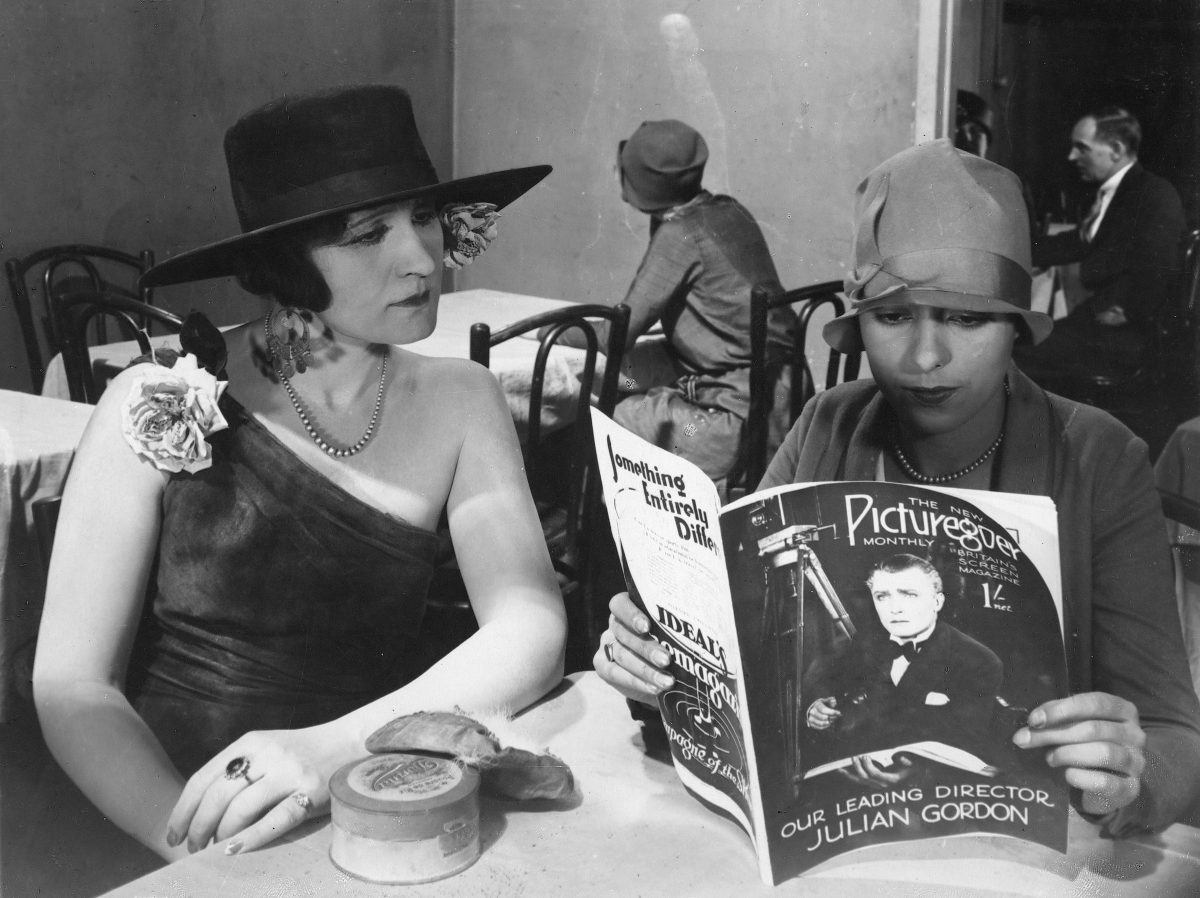
Dir: Anthony Asquith | UK | Drama | 101′
British Instructional Films is a production credit that makes Shooting Stars sound as if it’s going to be a dull affair, suggesting a utilitarian entertainment for the masses. In fact it’s quite the opposite: Shooting Stars has a strong popular appeal but is never complacent. Throughout a running time of 101 minutes this stunning film has much of the flavour and emotional sophistication of the European Cinema with the craft and enthusiasm of Hollywood of the 1920s: a confident young man’s film (Anthony Asquith’s first) assimilating, without ever imitating, the influence of Lang and Murnau (the staging and lighting of sets) an expressive Chaplin/Lubitsch style acting and a precise attention to detail equalling Hitchcock, who was Asquith’s contemporary.
Asquith really did his homework: visiting European studios and Hollywood where he met and spoke to prominent producers, directors and actors. On returning to England he wrote a clever, nuanced story so tightly constructed that the credited A.V. Bramble only went thorough the motions as a director – a very much in-charge Asquith completely oversaw the production.
Mae Feather (Annette Benson) and Julian Gordon (Brian Aherne) are a married couple and movie stars. The marriage is strained. Mae is attracted to actor/comedian Andy Wilkes (Donald Calthrop). Julian finds out and threatens Mae with a scandal that will ruin her career. The distraught wife plans an act of violence against her husband.
The title Shooting Stars operates on three levels: the film making process itself; the transient nature of a film star’s fame; and that star being the possible victim of a shotgun loaded with real bullets, fired on the set. Between these conceits the film oscillates, creating constant tension, comedy and tragic rejection.
Asquith’s later A Cottage on Dartmoor displayed an acute editing comparable to Hitchcock and indebted to Eisenstein. In Shooting Stars it’s not so much the cutting but a representation of objects that’s remarkable. Much playful suspense is created between the similar shape of a lipstick and a bullet. They become symbols of both sexual betrayal and Mae’s plot to kill, as they’re jostled back and forth in the couple’s home, and then in abstract imagery against a skyline. One is mistaken for the other as the camera compounds a perception of dangerous ambiguity. Such inter-changeability proves fascinating.
And round these ‘tease’ object moments, Asquith directs a sad marital drama and sharp satire on the film industry. The leading actors are being directed in a Western drama called “Prairie Love.” This is set in a British film studio, in Cricklewood, North London with some location work on the Devon coast. In the opening scenes the camera prowls around this frontier romance, but also over another film being shot in the same studio space. All done with a superbly staged crane shot looking down on the comedies and dramas being filmed, as extras get out of the way of electric cables and musicians rehearsing: a fluid long take achieving a semi-documentary elegance that is breathtaking.
Arguably, Asquith never bettered his great late 1920s achievements: Shooting Stars, A Cottage on Dartmoor and Underground are his best pictures. After that his career was pretty uneven. Check out The Way to the Stars, Pygmalion, The Browning Version, Orders to Kill and A Woman in Question as terrific highlights. Avoid The V.I.P.’s and The Yellow Rolls-Royce. His work in the sound era produced much brilliant craft, involvement and style but is unevenly spread. To watch Shooting Stars is to experience the visual poetry of a young filmmaker fully, and comfortably, in first love with his newly chosen medium. Alan Price©2018
NOW AVAILABLE ON BLURAY COURTESY OF THE BFI